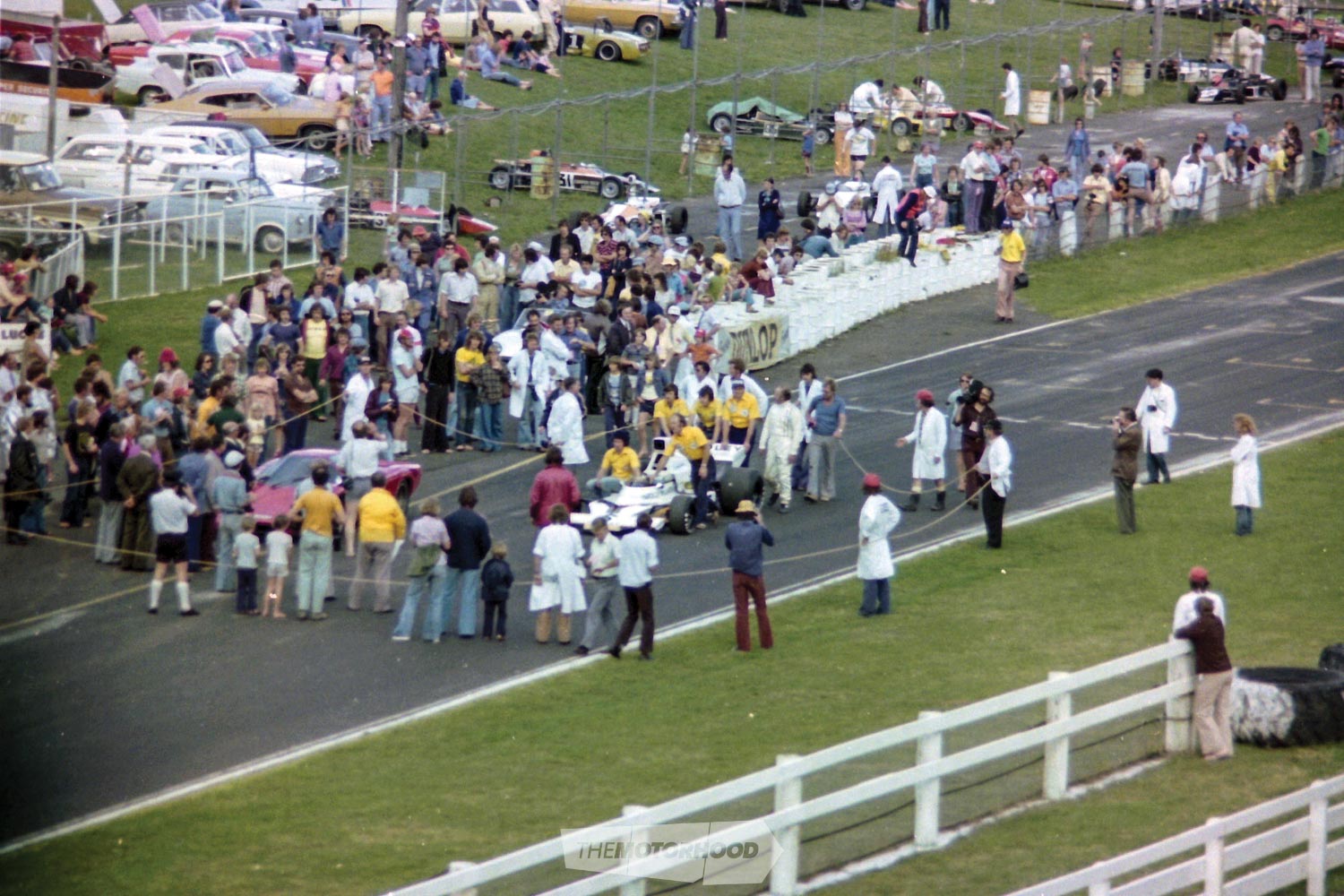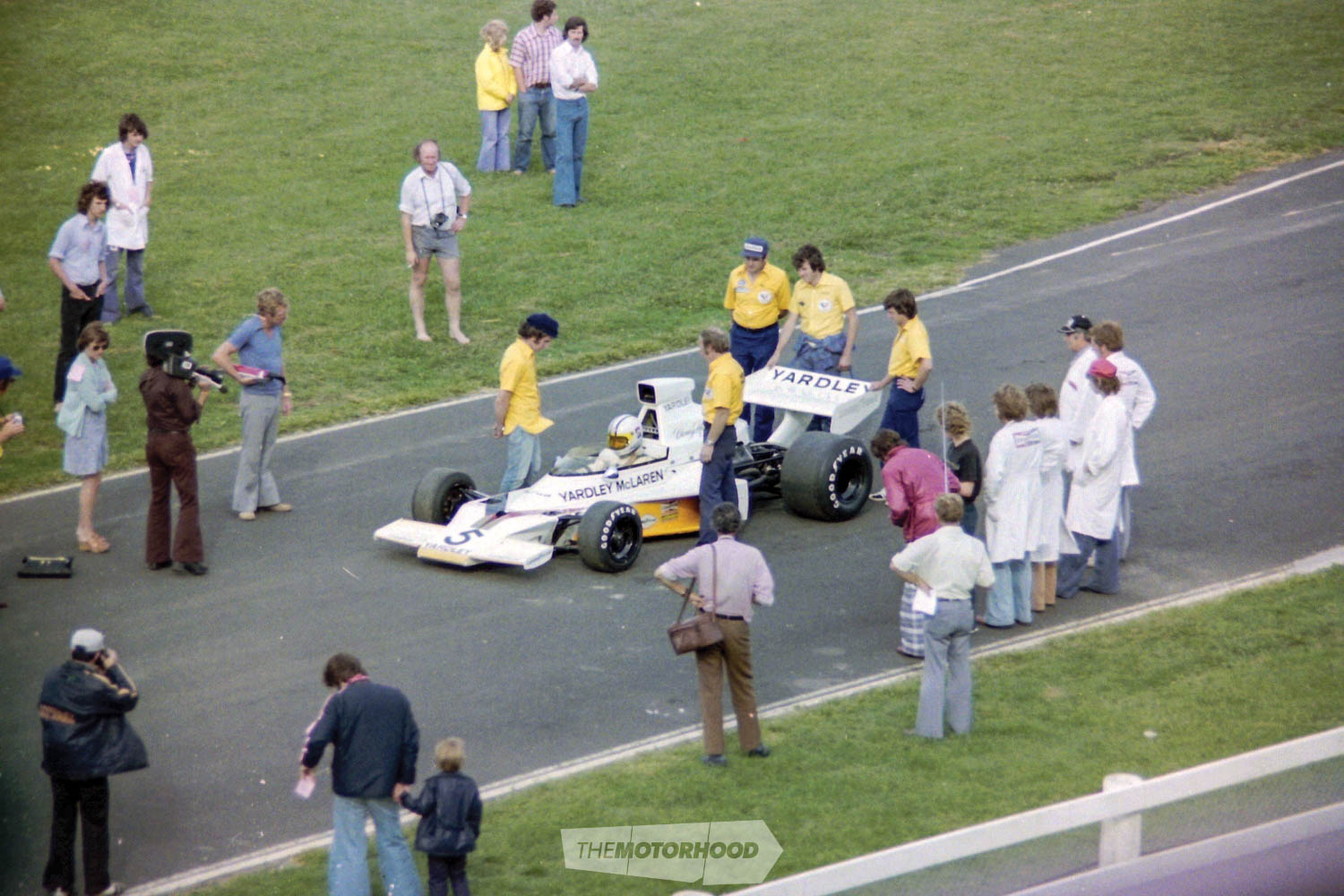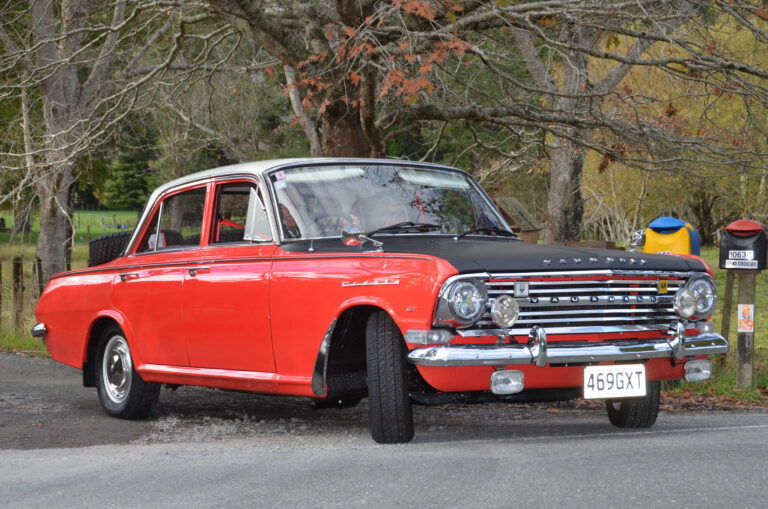Denny spent his 30th birthday in France — at Le Mans, to be exact — as part of the big-budget eight-car Ford team which had been assembled to beat the Ferraris

Denis Clive ‘Denny’ Hulme was born in the Nelson area on June 18, 1936, and moved with his parents and younger sister Anita to the Bay of Plenty when he was six. Denny spent his 30th birthday in France — at Le Mans, to be exact — as part of the big-budget eight-car Ford team (three Shelby entered, three from Holman and Moody, and two for England-based Alan Mann), which had been assembled to beat the Ferraris. He’d been there before, but that was five years earlier when he and compatriot Angus Hyslop had shared a Fiat Abarth 850S — all 847cc of it.
Carlo Abarth didn’t want this pair of Kiwis in one of his cars, but they’d been foisted on him by Shell. However, his view of them rather improved as the race wore on. By the end, he was positively in raptures with his New Zealand boys when they brought the tiny car home 14th, but, much more significantly, they won the 701–850cc class. Remarkably, Denny didn’t get another Le Mans gig until Ford came knocking five years later — this despite him already forging a very successful niche in sports cars. Not that he was twiddling his thumbs on most of the birthdays between his Le Mans outings. In 1963, he won round nine of the hotly contested Formula Junior championship and with it the Anerley Trophy at Crystal Palace on June 3, while, on the last day of the month, he took out the Formula Junior support race for the French Grand Prix (GP) at Reims.

World championship points
In June 1964, Denny was due to star in a completely different type of car, a 7.0-litre Ford Galaxie of aircraft-carrier proportions; however, an engine malfunction meant that neither he nor co-driver Jack Brabham got to start in the Brands Hatch 6 Hours. Denny had great success with the white and green Sid Taylor–entered Brabham BT8, and, over the first weekend of June in ’65, he won at different tracks on consecutive days with the pretty little 2.0-litre Climax-powered sports car. At the end of that month, he scored his first world championship points with a fine fourth in the French GP over the challenging Clermont-Ferrand circuit. That was before Denny was a Formula 1 (F1) regular, but, by the time he arrived back in Le Mans in preparation to take part in his second ‘round the clock’ classic — on his 30th birthday — he was a permanent member of the Brabham F1 squad. A week earlier, he’d been in one of eight cars that had crashed out on the opening lap of the Belgian GP — Spa-Francorchamps was already sodden when the race started, but when a heavy rainstorm hit soon afterwards, all hell broke loose. To say Denny never was much of a fan of racing in the rain is a slight understatement.
Life in the fast lane
Fun fact — is there another driver in history who started his second Grand Prix d’Endurance les 24 Heures du Le Mans in a car with a bigger increase in engine capacity than the car he raced on debut? The pale blue Ford GT40, with its red and white markings, had 6982cc — a mere 8.24 times the cubic centimetres of the Fiat Abarth! Fast forward two decades, and Denny spent the two weekends before his 50th birthday back on the track … not in historics or doing demonstration runs, no — frontline professional motor racing. In the previous 20 years, he’d been crowned world champion in his second full season, won the Can-Am title twice, been Rookie of the Year at Indianapolis, won more F1 GPs, become a father to Martin and Adele, retired from motor racing, returned to New Zealand to live, and found himself with a bit of spare time on his hands and gone back to motor racing — pretty standard, really.

Great champion
The European Group A foray started at Misano on May 4 — by 1986, the category was in a phase between getting kicked off and having to run an RS500 Sierra to even look like having a chance. Denny was in a 3.5 Rover Vitesse and, in the top category, was up against BMW 635CSi cars, Volvo 240 Turbos, and Ford’s XR4Ti. From Misano, on Italy’s Adriatic coast, they moved to Sweden and Anderstorp, where Denny had taken his penultimate F1 victory on the eve of his 37th birthday. He and co-driver Jeff Allam finished third, but they weren’t content to rest on that set of laurels. Ten days before Denny’s 50th birthday, they were at Brno in Czechoslovakia (as it was then), where they were fifth, but, a week later, at Austria’s Zeltweg circuit, they could only manage 19th. This had nothing to do with the senior man being three days shy of half a century old, as, in early August, they anchored the sixth-placed Rover in the 24 Hours of Spa (the race in which Denny astonished Englishman Allam with his solution for the heat — “He cut the bottoms off his race suit at about the knee”), but the best was still to come … In 1966, Denny won the Tourist Trophy in the Chev V8–powered Sid Taylor Lola T70, and, two decades later, at Silverstone, the Hulme/Allam Rover was victorious. As Allam told me in 2007 — “I knew it was 20 years since he’d won it and wanted him to take the limelight, but he wouldn’t have it. He knew I’d driven more laps and wanted to leave no one in any doubt about it … dear old Denny.”
Sadly, Denny never got to celebrate another ‘milestone’ birthday — he was 56 when he had the heart attack at Bathurst in 1992, but this month marks 80 years since he was born, and I know I’ll not be alone in raising a glass on the 18th and remembering our great F1 world champion.
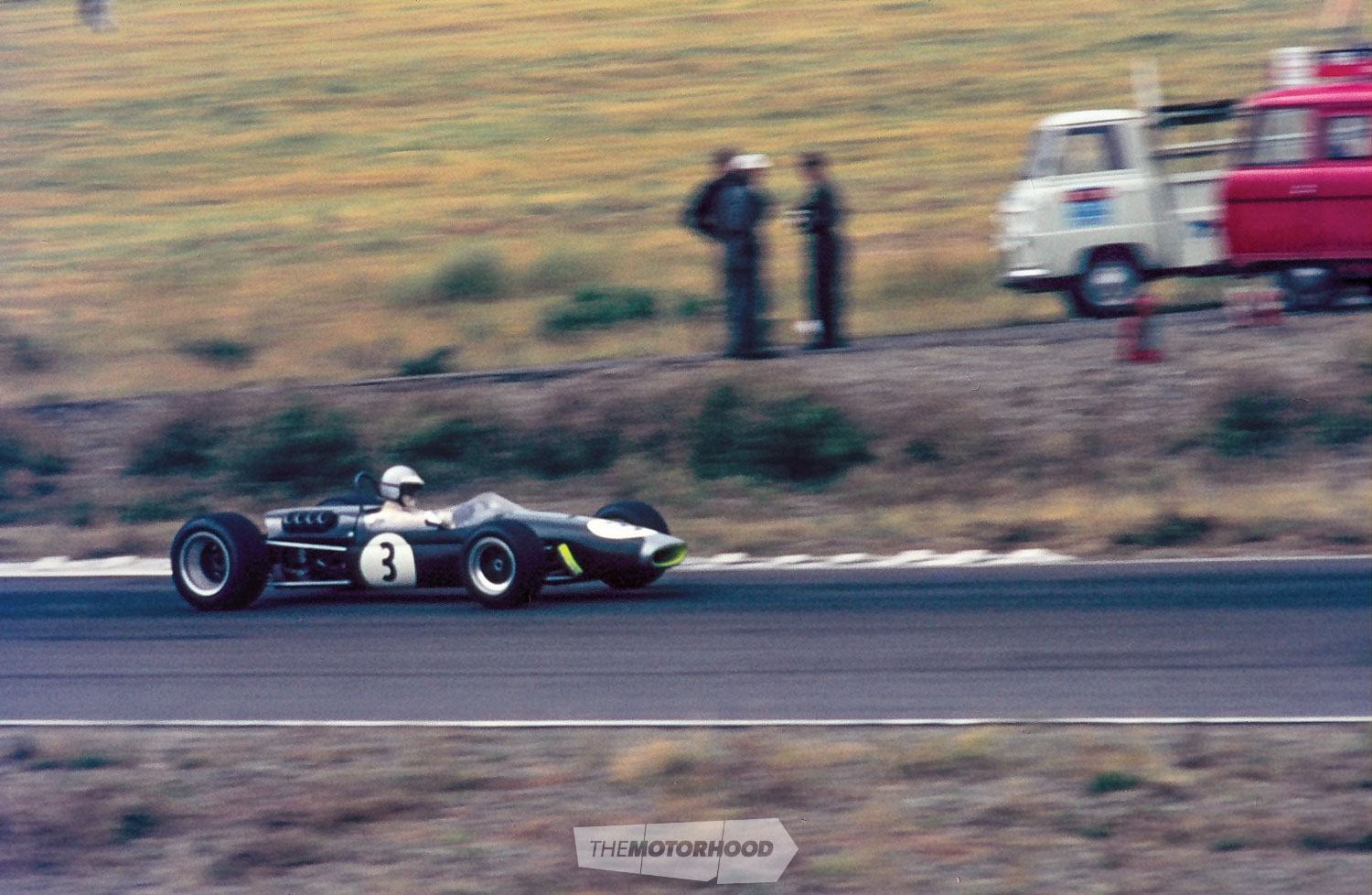
Denny Hulme at speed in the Brabham at Teretonga. Photo: Ian Peak.
A win for New Zealand
Of course, this month also marks half a century since that historic, and somewhat controversial, victory for Ford at Le Mans — but it wasn’t just a win for Ford over the previously dominant Ferraris; it was a win for New Zealand, with the pairing of Bruce McLaren and Chris Amon doing it for Detroit in the patriotically coloured black GT40 with the two silver stripes. The second-placed GT40 of Ken Miles and Denny was second, just a whisker behind — the grand plan of a staged dead heat having been scuppered by the organizers. Miles was a US-based Englishman who had done a serious amount of the development work on the car. He was very much a sports car specialist and, at 47, was the oldest of the drivers in Ford’s 7.0-litre GT40s at Le Mans in 1966. The year had started well for him, with victories in both the 24 Hours of Daytona and 12 Hours of Sebring, where he had been paired with Indy 500 hard-nut Lloyd Ruby.
After suffering spinal injuries in a plane crash, Ruby was temporarily out of racing, and that was when one DC Hulme was drafted into the ‘Shelby American’ squad. Miles was at the wheel for the final run to the line in the pale blue car, while Bruce was in the all-black GT40. Much has been written about the finish, and it has the potential for a great film — so long as New Zealand’s enormous involvement isn’t somehow airbrushed out of history. There are suggestions that Miles felt slighted by Ford when the automotive giant might have provided an ‘open goal’ for him to win, after all the development work he’d done — I even heard once that Denny was disgruntled, but there has never been any hint of discontent on his part when I have run that notion past folk such as Chris Amon or the late Eoin Young and Phil Kerr.
If you’d like to read a good book on the subject, I recommend Go Like Hell by AJ Baime. There was, in fact, a proposal that it be made into a film, with both Cruise T and Pitt B hinted at as being involved. Heck, I even heard it was going to be shot in New Zealand, with one of our circuits being ‘turned into’ Le Mans. A quick check of the Internet Movie Database describes the project as being “in development”, so your guess is as good as mine.
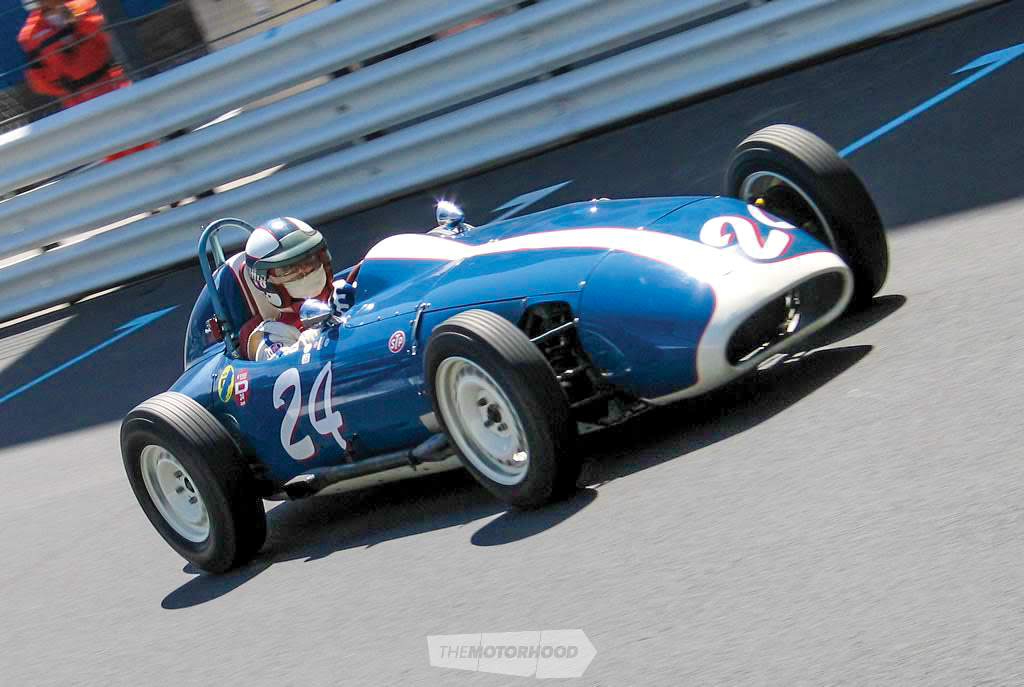
Kiwi success
I don’t know how you measure two Kiwis winning the biggest and greatest endurance motor race in the world alongside all the other magnificent sporting achievements of this wonderful little nation. We specialize in punching above our weight — not just with ‘great stuff, we came fifth; not bad for 4.5 million people’ but because we ignore that we’re small and take on the world as equals. Amon and McLaren’s victory deserves to be ranked with the very best of our achievements of the world stage — it was, and is, a huge deal.
Just quickly on the subject of films — Roger Donaldson and his team are leaving no stone unturned as they march relentlessly towards completion of the documentary on Bruce McLaren. I emphasize ‘documentary’ — this is not be confused with the project that was launched at the inaugural New Zealand A1 GP round in January 2007. Donaldson has had international success before, but petrolheads might only know him as the guy behind Smash Palace from the early ’80s and The World’s Fastest Indian. However, he has done much more and is both a perfectionist and an enthusiast, so we could not wish for anyone better to tell the story of one of the greatest of the great Kiwis.

Denny Hulme demonstrates his McLaren M23 at Pukekohe in 1976. Photo: Graeme Bennett
Juniors
I mentioned Formula Junior earlier — that was the aptly named category that sat below F1 and replaced both Formula 2 (F2) and Formula 3 (F3) from 1959 to 1963. For 1964, F2 and F3 returned, and Formula Junior cars were soon obsolete — some of the latter models had a second, albeit short, life in F3, but, by the late ’60s, they’d been long since superseded and were worth very little. The category spanned the transition of the engine going from being in front of the driver, to behind. (As an aside — I always hesitate when wanting to write ‘rear engined’ — a Porsche 911 or original VW Beetle is rear engined. So, why not write ‘mid engined’? You would know what I meant — right? That being that the engine is positioned between the driver and the adjacent axle … however, under that line of logic, is not my daughter’s Citroën or the Rover Vitesse that Denny won the Tourist Trophy in also mid engined? Indeed, under this criterion, the majority of us drive mid-engined cars … Anyway, let’s get back on track.)
So, after the format was invented in Italy in the late ’50s, at a time when Cooper was still on the cusp of rewriting history by getting a car with the engine behind the driver to win the world championship, it was not entirely surprising that all early Italian juniors had their engine up front and that, in most cases, it was a Fiat. Those cars — like Stanguellinis; Volpinis, Taraschis; and my personal favourite (a love affair that can be traced back to the Hippo book, Racing Cars of the World, that I was given for birthday number five; like Denny, I was born in June), the Osca — were the first to become obsolete, but are today worth the most. As we approach the 60th anniversary of the birth of Formula Junior, prices for these miniature GP cars continue to escalate, and so, while no junior is a bargain, and those Italian-built Fiat-powered little gems might lag well behind in the power stakes, they more than make up for it with their values.

By 1963, you ideally needed a Brabham or Lotus to win — Lolas or Coopers might get you on a podium every now and then, but the days when a dozen or more different marques would be on a grid were gone. This year’s Monaco Historique featured front-engined juniors only, and in addition to the Italians already mentioned were models from Elva, Lola, Gemini, Bond, Alexis, BMC, and many other companies. If I couldn’t have an Osca, the Californian-built Apache would do me, as it looks like a scaled-down Indy roadster.
Five Kiwis were entered, Roger Herrick (Lola Mk2 Ford); Paul Halford (Autosud Fiat); Neil Tolich (Jocko Fiat); Michael Sexton (Gemini BMC); and Tony Olisoff, in his unique front-wheel-drive Elfin BMC. This is a top effort given no Australian entries — and Formula Junior is very strong over the ditch.


